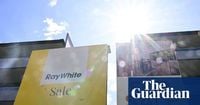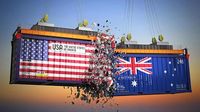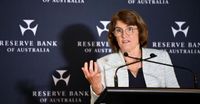The Reserve Bank of Australia (RBA) is poised for a potential shift in monetary policy as it prepares to meet on May 20, 2025. With rising global trade tensions and a tumultuous economic landscape, the RBA is considering cutting interest rates, which could have significant implications for the housing market, consumer confidence, and the broader Australian economy.
As global trade wars, particularly those led by the United States, create uncertainty, financial markets and major banks in Australia are in agreement that a rate cut is likely in the near future. The Commonwealth Bank and other institutions are contemplating a 0.25% reduction, while some experts warn that a more substantial cut of 0.50% could be necessary if global conditions deteriorate further.
Minutes from the RBA’s April meeting indicate that the board is acutely aware of the risks posed by the ongoing trade war, especially given Australia’s reliance on exports. The board noted that market expectations suggest up to five rate cuts by late 2025, potentially lowering the cash rate to 2.9%. This marks a significant shift from the RBA’s previous stance, as it now aims to support economic growth while ensuring financial stability.
Historically, lower interest rates tend to stimulate the housing market by making borrowing cheaper, resulting in lower mortgage payments and potentially increasing property prices. However, the RBA is cautious about the implications of too many cuts, fearing that excessive borrowing could inflate home prices and weaken lending standards. The board’s minutes reflect concerns that reduced rates may lead to riskier borrowing practices, reminiscent of past cycles.
Recent government policy changes may also bolster the housing market. Mortgage lenders are no longer required to factor in student debt when assessing borrowing capacity, allowing many buyers to access larger loans. Additionally, first-time buyers can now enter the market with just a 5% deposit, supported by government backing on 15% of the mortgage. These adjustments are expected to heighten demand and push up prices, particularly in major cities where supply is limited.
Despite these encouraging developments, the RBA remains vigilant, closely monitoring inflation, wages, and job market data, all of which will play a crucial role in their forthcoming decision. The consumer price index (CPI) data, set to be released on April 30, is anticipated to show inflation dipping below 3%, a key figure for the RBA’s considerations. Concurrently, rising unemployment is expected, further supporting the case for a rate reduction.
Consumer confidence has already taken a hit, as indicated by the ANZ-Roy Morgan index, which showed a notable decline following recent tariff announcements. Many households are feeling the strain of high debt costs and are seeking relief through lower interest rates. However, the RBA is wary that a booming housing market could introduce new inflation risks.
As the RBA gears up for its May meeting, the situation is critical. The bank faces the dual challenge of fostering economic growth while managing potential risks in the housing market and overall financial system. With expectations leaning toward a rate cut and the possibility of further reductions, the decisions made in the coming weeks will be pivotal in shaping Australia’s economic trajectory through 2025.
In a somewhat contrasting narrative, the RBA has tempered expectations regarding a double rate cut, citing concerns about global economic uncertainties and the potential for a trade war to escalate. The RBA's recent minutes emphasize that while financial markets are betting on imminent rate cuts, the bank remains cautious, with Governor Michele Bullock stating it is "too early" to determine the full impact of the U.S. trade policies on interest rates.
Despite the market's anticipation of rate cuts, the RBA's rhetoric suggests a measured approach. The board has indicated that it will carefully consider the evolving economic landscape before making any decisions. The minutes highlight the importance of upcoming data on inflation, wages, and labor market trends, which will inform their policy direction.
In the lead-up to the May 3 election, both the Labor Party and the Coalition are promoting competing policies aimed at easing entry into the housing market for first-time buyers. However, these proposals have come under scrutiny from economists who warn that they may inadvertently drive property prices higher by increasing demand without adequately addressing supply limitations.
Peter Tulip, the chief economist at the Centre for Independent Studies, expressed skepticism regarding the speed of the RBA's potential rate cuts, suggesting that if the markets are correct, the impact on property values could be substantial. His econometric model indicates that a 1 percentage point cut in interest rates could lead to a 6% increase in home prices after one year and an 8% increase after two years. With the national median house price hovering around $772,000, such a rate cut could translate to an increase of approximately $46,000 in the first year and $60,000 in the second.
Brendan Coates, director of the Grattan Institute’s housing and economic security program, noted that lower interest rates would enable homebuyers to service larger loans, thereby increasing their purchasing power. However, he cautioned that this could result in buyers taking on larger mortgages than they can comfortably manage.
As the debate continues, unlocking more housing supply remains a crucial factor in addressing affordability issues. Labor has pledged to deliver 1.2 million homes in five years through its Housing Accord with the states, while the Coalition has promised an additional half a million homes, which could potentially reduce prices and rents by as much as 12% if realized.
In summary, the Reserve Bank of Australia stands at a crossroads, with global trade tensions and domestic policies shaping its monetary policy decisions. As the May meeting approaches, all eyes will be on the RBA’s actions, which will undoubtedly have far-reaching consequences for the housing market and the broader economy.






